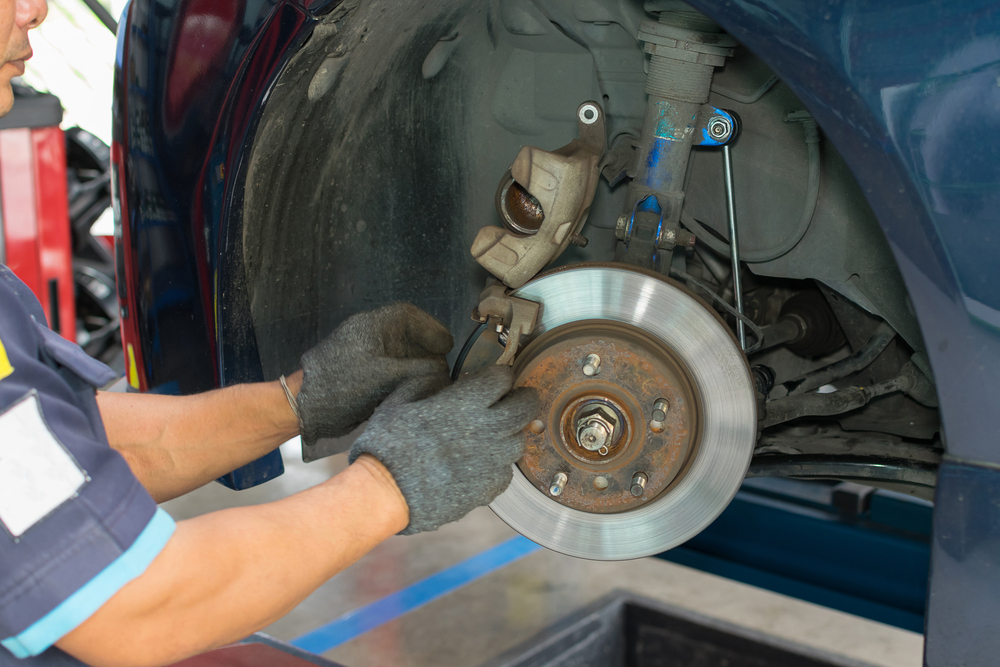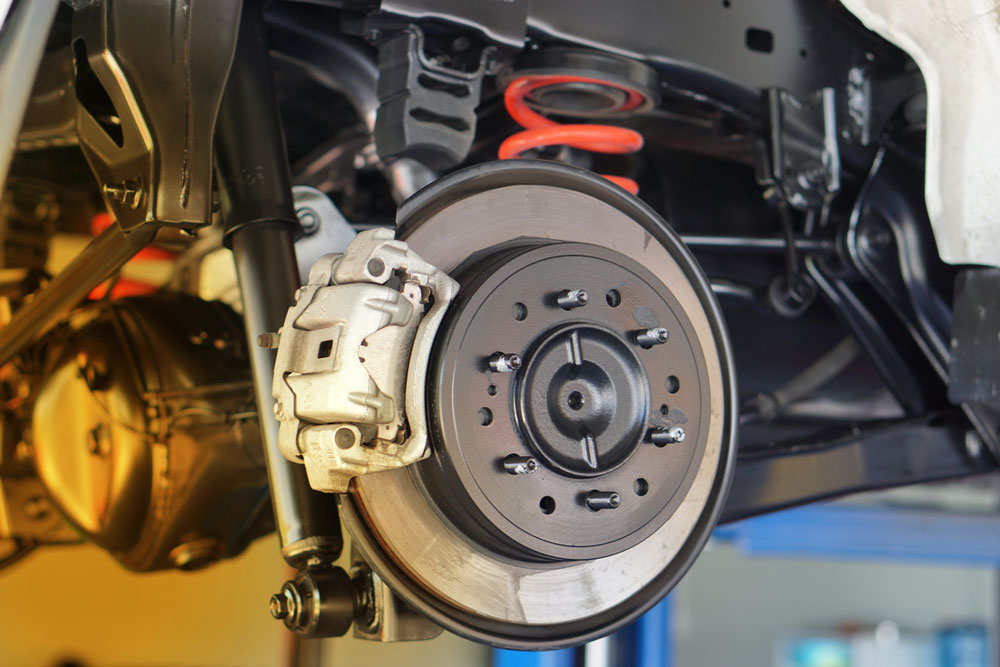What are the warning signs of brake pad replacement?
Weird vibrations
Most drivers can feel a little bit of a hum from the motor while sitting in their cars. However, if the vibrations increase to the point where your can see your steering wheel and other interior parts shaking, it might be a sign that you are in need of brake repair. A rumbling in the seats is typically a sign that the back brakes need work, while a shaky steering wheel would mean you should check your front brakes. It usually means problems with the rotor, the disc-shaped piece that the brake pads clamp down on in order to stop your vehicle.
Screeching, squealing sounds
Do you hear a screeching noise every time you stop the car? While this doesn't mean that something is majorly wrong, it is an indication that you should get it checked in case brake repair is required. The noise could come from wear of the material used for brakes that include metal shavings. Once this happens, the rotors also start getting damaged, so the cost of repairs only goes up.
Warning light
Low brake fluid means warning lights will switch on as it means your system won't function properly. Modern vehicles are equipped with brake warning lights that appear on the dash. One is your Antilock Braking System (ABS) light and the other is your brake system warning light. The brake light doesn't always get switched on when there is an issue - it is also the light appearing on the dash when the parking brake is engaged. However, if the brake warning light is on without the parking brake being engaged, it is time to consult a professional.
Loose brakes
Another way you can feel your brakes failing is if you find them to be increasingly loose. For instance, maybe when you buy the vehicle, it would jerk to a stop when your foot tapped against the brake pedal. When the brakes need repair, you have to push harder before the car comes to a complete stop.
Trouble while stopping
Are you facing problems stopping your car? Is it taking longer than usual to bring the vehicle to a halt? If you are experiencing less than ideal stoppage times while applying brakes, it might indicate the brake pads are completely worn down or the brake fluid is low (at times due to a leak). Even though you might not get any sort of warning lights or heard any noise, it signals trouble if you can't stop smoothly.
When you should you change brake pads?
Any mechanic will tell you that it is time to change your brake pads when the lining is in the 3 mm to 4 mm range. The standard thickness of new brake linings is 12 mm. The first half of the brake pad's lifespan is generally carefree. As it wears past 6 mm, you have to listen for signs that it is time. Brake pads incorporate a metal burr that contacts the rotor at 3 mm, causing a squeal that signals you to service the brakes.
As mentioned above, if you ignore those odd sounds, it results in damage to the rotors, at first scoring, then overheating, and potentially even warping them as the pads wear to nothing.
How to keep an eye on brake pads?
Overall, it is a good idea to check the brake pad lining thickness every time you change the oil. Many auto body shops will automatically check them for you while changing the oil. You can check them yourself too. Try peering through the slots in the outside wheel/rim assembly (you may have to remove the wheel). The rotor is sandwiched between the inner and the outer pads. A metal-on-metal condition demands immediate attention. Otherwise, there may be a bit of time, yet anything less than 1/4 inch of remaining pad surface should be addressed as quickly as possible.
How long does it take to wear out brake pads?
There is no straight answer to this question as it depends upon your driving habits and the material your brake pad is made from. Speeding, last-second braking and miles driven either around town, stop-and-go traffic & highway miles play an integral role in how fast your brake pads wear out. Moreover, if you live in mountainous country, where constant downhill braking is part of your daily routine, the brake pads wear out faster. Softer brake-lining materials tend to wear down more quickly, while metal components wear on the rotors more heavily. Ceramics combine the best aspects of the two, but cost more.
What does it cost you to replace brake pads?
Really, the sooner you address a problem, the cheaper it is going to be. As time goes on, more things can get damaged and more extensive work could be needed. Because of this, the total cost can range from a couple hundred dollars to well over a thousand. Make sure you get professionals for this task. Unless you have the right tools, in addition to extensive and thorough mechanical knowledge, this work is not something that should be done by anyone but a certified and qualified mechanic.
Regular inspections ensure that all the components of your braking system are working correctly. Under no circumstances should brake safety be ignored - it could prove to be fatal. So whenever you feel something isn't functioning as it should be, get it check right away. Find out about the latest vehicles in the market at WorldCarHub.com - fancy models, competitive pricing, and superb shopping experience is what you can expect here.


